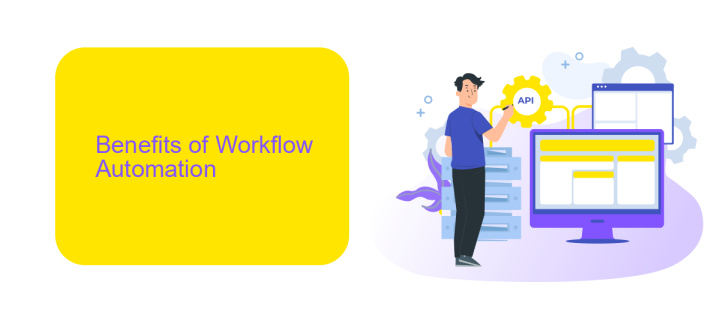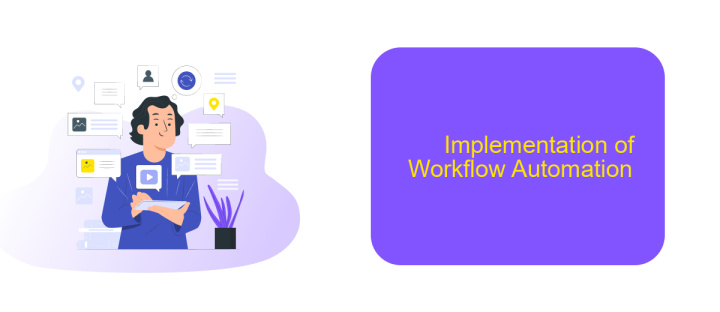Example of Workflow Automation
Workflow automation is revolutionizing the way businesses operate by streamlining processes and eliminating repetitive tasks. This article explores an example of workflow automation, highlighting its benefits and practical applications. By leveraging technology, companies can enhance efficiency, reduce errors, and free up valuable time for more strategic activities. Discover how implementing workflow automation can transform your business operations and drive growth.
Introduction
Workflow automation is a powerful approach to streamline business processes and enhance efficiency. By automating repetitive tasks, organizations can save time, reduce errors, and focus on more strategic activities. This not only improves productivity but also leads to better resource management and cost savings.
- Reduces manual intervention
- Minimizes human errors
- Enhances productivity
- Improves consistency and reliability
- Facilitates better resource allocation
One of the key aspects of successful workflow automation is the integration of various tools and services. Platforms like ApiX-Drive enable seamless integration between different applications, allowing data to flow effortlessly and processes to be synchronized. By leveraging such services, businesses can create a cohesive and efficient workflow that adapts to their unique needs and scales with their growth.
Benefits of Workflow Automation

Workflow automation significantly enhances efficiency by streamlining repetitive tasks and reducing the need for manual intervention. This not only saves time but also minimizes the risk of human error, ensuring that processes run smoothly and consistently. By automating workflows, businesses can allocate their resources more effectively, allowing employees to focus on higher-value tasks that require creativity and critical thinking.
Another key benefit of workflow automation is the ability to integrate various systems and applications seamlessly. Tools like ApiX-Drive facilitate these integrations, enabling different platforms to communicate and share data effortlessly. This ensures that information flows uninterrupted across departments, enhancing collaboration and decision-making. Moreover, automated workflows can provide real-time insights and analytics, helping organizations to monitor performance and identify areas for improvement swiftly.
Example of Workflow Automation

Workflow automation is a powerful tool that can significantly enhance productivity and efficiency in various business processes. By automating repetitive tasks, organizations can save time, reduce errors, and ensure consistency in their operations. Implementing workflow automation involves several key steps to ensure a smooth transition from manual to automated processes.
- Identify repetitive tasks that can be automated.
- Select a suitable workflow automation tool, such as ApiX-Drive, which allows seamless integration of various applications and services.
- Define the workflow process, including triggers, actions, and conditions.
- Test the automated workflow to ensure it functions correctly.
- Monitor and optimize the workflow for continuous improvement.
Using a service like ApiX-Drive can simplify the integration of different applications, making it easier to automate workflows without requiring extensive technical knowledge. With its user-friendly interface and robust features, ApiX-Drive enables businesses to connect multiple platforms, automate data transfers, and streamline their operations efficiently. By leveraging workflow automation, companies can focus on more strategic tasks, ultimately driving growth and innovation.
Implementation of Workflow Automation

Implementing workflow automation involves several key steps that ensure a smooth transition from manual processes to automated systems. First, it is essential to identify repetitive tasks and processes that can benefit from automation. This involves conducting a thorough analysis of current workflows to pinpoint inefficiencies.
Next, selecting the right tools and platforms is crucial. One effective solution is ApiX-Drive, a service that facilitates seamless integration between various applications and systems. This platform allows for the automation of data transfer and synchronization, reducing the need for manual intervention.
- Identify repetitive tasks and inefficiencies
- Select suitable automation tools like ApiX-Drive
- Configure integrations and workflows
- Test and monitor the automated processes
After configuring the integrations, it is important to test the automated workflows to ensure they function as expected. Continuous monitoring and optimization are also necessary to maintain efficiency and address any potential issues. By following these steps, organizations can achieve significant improvements in productivity and accuracy.
Conclusion
In conclusion, workflow automation offers a myriad of benefits that can significantly enhance operational efficiency and productivity. By streamlining repetitive tasks, reducing human error, and ensuring consistency, businesses can focus more on strategic activities that drive growth and innovation. Implementing automation tools and solutions can lead to a more agile and responsive organization, capable of adapting to the rapidly changing market demands.
Moreover, services like ApiX-Drive play a crucial role in optimizing workflow automation by providing seamless integration between various applications and systems. With its user-friendly interface and robust capabilities, ApiX-Drive enables businesses to easily connect their tools and automate complex processes without the need for extensive technical expertise. This not only saves time and resources but also empowers teams to achieve higher levels of efficiency and effectiveness in their daily operations.
FAQ
What is workflow automation?
How can workflow automation benefit my business?
What types of tasks can be automated?
How do I get started with workflow automation?
Is workflow automation difficult to implement?
Strive to take your business to the next level, achieve your goals faster and more efficiently? Apix-Drive is your reliable assistant for these tasks. An online service and application connector will help you automate key business processes and get rid of the routine. You and your employees will free up time for important core tasks. Try Apix-Drive features for free to see the effectiveness of the online connector for yourself.

